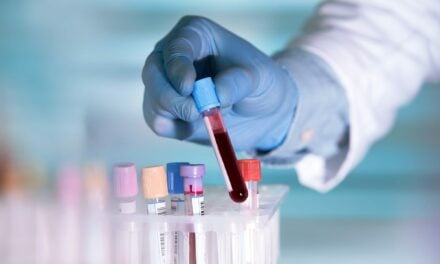Researchers have developed a semiconductor sensor capable of detecting ultra-low concentrations of tumor markers on microchips made using semiconductor micromachine technology, which has successfully detected prostate cancer.
They succeeded in detecting only prostate cancer antigens by adsorbing disease-derived marker molecules contained in blood and other bodily fluids into the surface of a flexibly deforming nanosheet, using the principle of converting the force caused by the interaction between the adsorbed molecules into the amount of deformation of the nanosheet. Testing chips, formed in sizes of several millimeters across using semiconductor technologies, are expected to be used as IoT biosensors for home-based testing.
The research team was led by associate Professor Kazuhiro Takahashi and Tomoya Maeda (a second-year Master’s student) and other members of the Department of Electrical and Electronic Information Engineering at Toyohashi University of Technology
Measuring devices that perform disease tests simply and quickly from small amounts of blood, urine, saliva, and other bodily fluids are extremely important for accurate diagnosis and verifying the effectiveness of therapeutic treatments.
The team is researching a micro-scale testing chip that uses flexibly deforming nanosheets formed using semiconductor micromachine technology to determine the presence or absence of disease. The principle of the method is that antibodies which catch the marker (antigen) molecules to be detected are fixed onto the nanosheet in advance, and the deformation of the thin film—caused by the force of the adsorbed antigens electrically repelling each other—is read.
Using the biosensors developed on this occasion, the team conducted an experiment detecting prostate cancer biomarkers, and succeeded in detecting 100 attograms (equivalent to three attomolars in terms of molar concentration) contained in one milliliter of fluid. This lower limit detection concentration is comparable to that of large testing devices using labeling agents, and can be hoped to be applied in ultra-sensitive testing with portable-scale testing devices. Furthermore, since it is possible to detect how nanosheets deform by adsorption of molecules in real time, it is possible to detect disease-derived molecules faster than in comparison with testing equipment using labeling agents.
The research team now plans to demonstrate that biomarkers can be detected on semiconductor sensors that integrate analytical integrated circuitry, with a view to practical applications in portable testing equipment.
Featured image: The semiconductor sensor that detects antigen molecules by capturing them on the surface of a nanosheet film. The peak shift amount represents the output value of the sensor proportional to the amount of deformation of the film during marker adsorption. Photo: COPYRIGHT (C) TOYOHASHI UNIVERSITY OF TECHNOLOGY.




